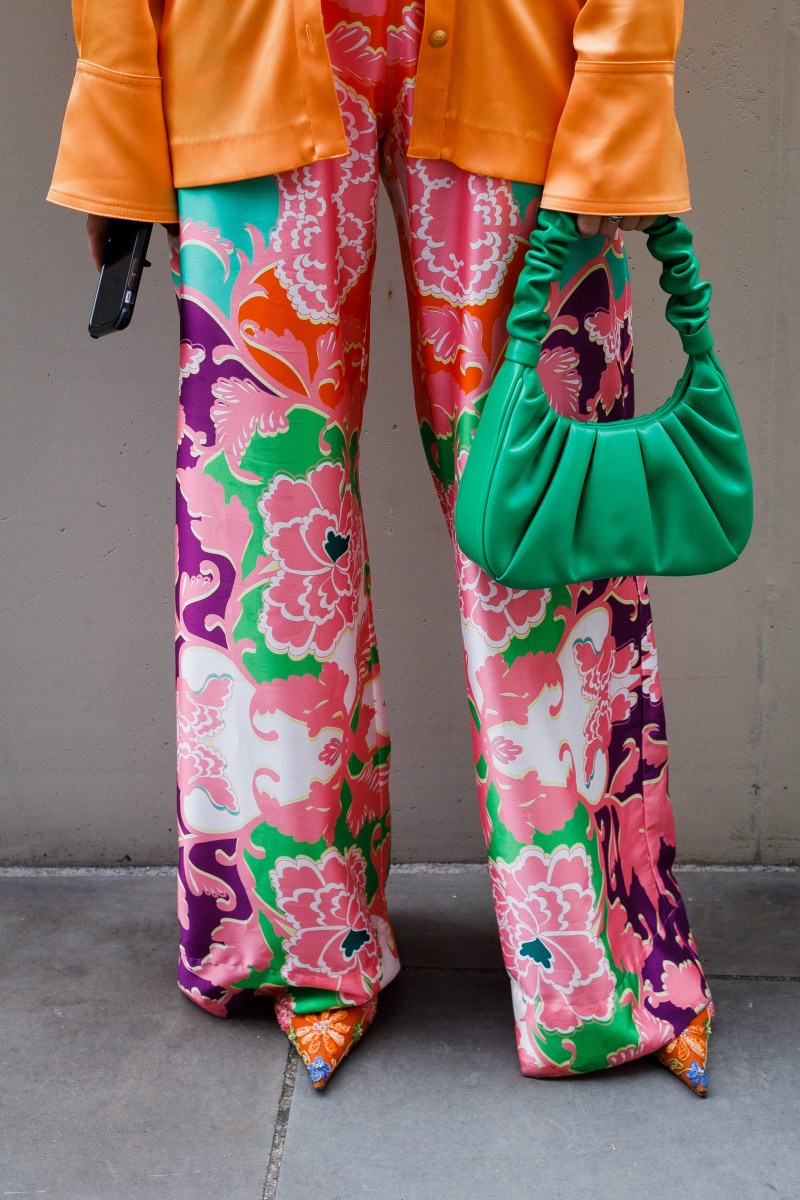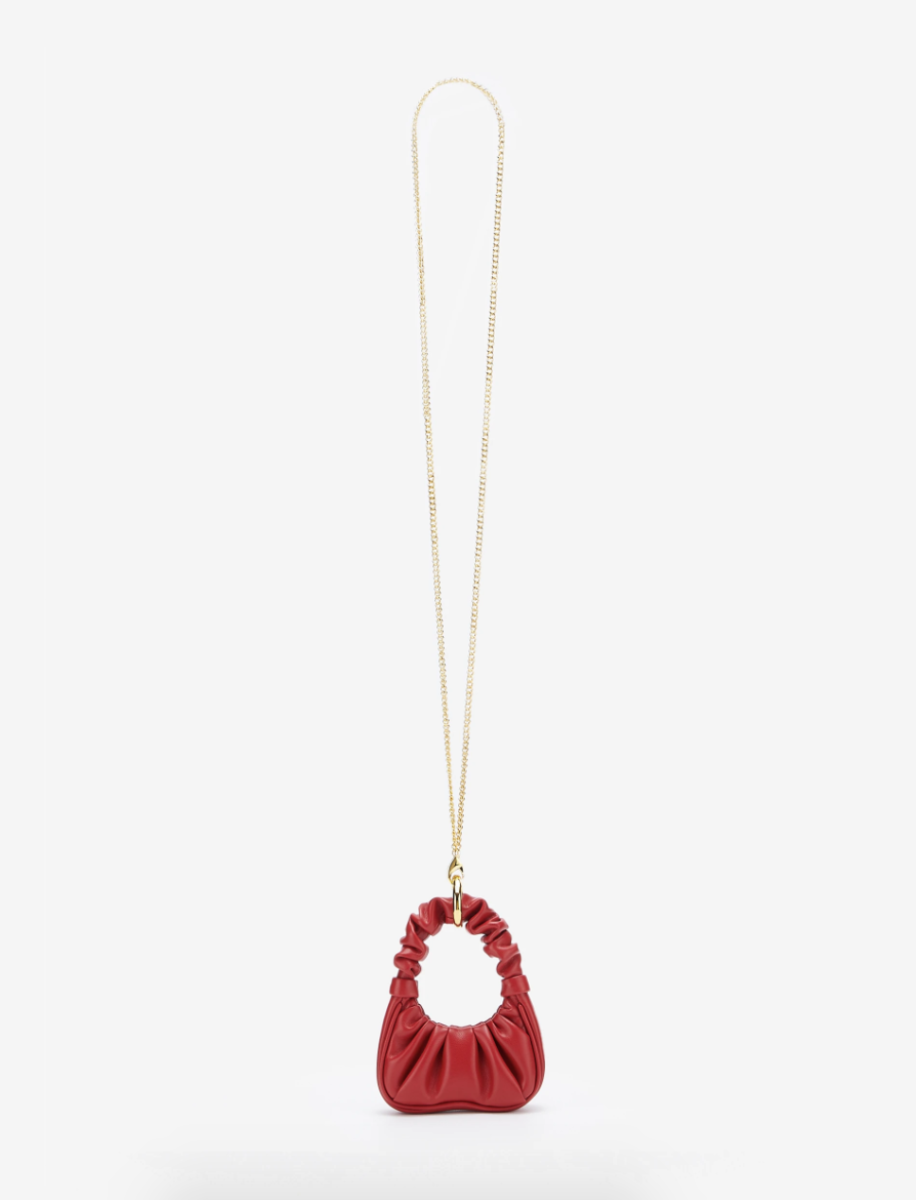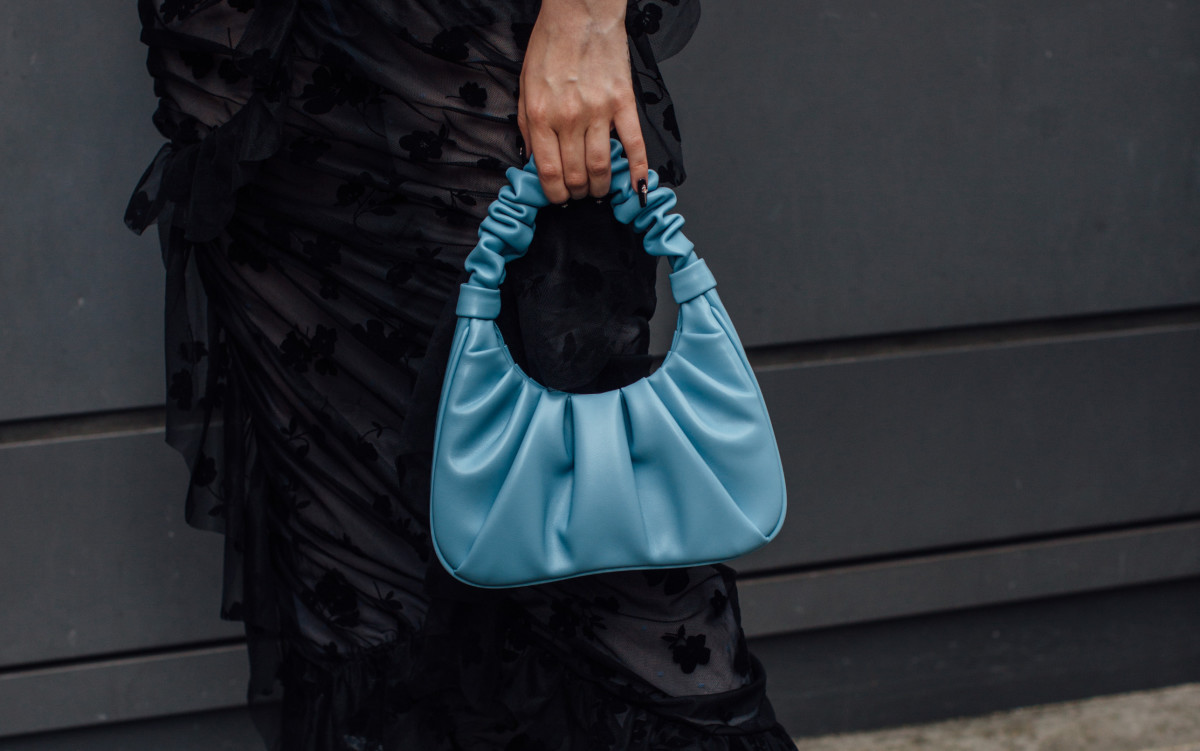Even at a time when no one was leaving the house, when paparazzi images of celebrities were scarce, when shopping trends were flipped on their heads and the industry was clouded by uncertainty, fashion still managed to churn out a handful of pieces that seemed to be everywhere — even if "everywhere" meant the social media feeds keeping us company in self-isolation.
One such inescapable item was J.W. Pei's Gabbi, a vegan leather shoulder bag distinguishable by its scrunchie handle, bold color and $89 price tag. You might've seen it on the arms of Emily Ratajkowski, Gigi Hadid, Irina Shayk, Charli and Dixie D'Amelio, or any number of influencers, editors or stylish people on the street over or on your timelines the past year and a half.
The Hong Kong- and Los Angeles-based accessories brand was founded in 2017 by husband-and-wife duo Steph Li and Yang Pei, but it had its first real, runaway hit during the most unlikely, difficult period for small businesses.

The story begins in early 2020. The Gabbi was actually born out of the success of a different style — the Eva, a minimal shoulder bag with a curved bottom that comes in an array of colors, textures and prints. "We had the Eva going really strong, and we wanted something that can go into fall and winter, because the Eva is very summery," Li says. "Since I was into the '90s, scrunchies and that kind of stuff, I was like, 'Why don't we put that into the handle part of the bag?'" The popularity of Bottega Veneta's Cloud bag and other styles in the market made her and the team feel confident in its potential.
J.W. Pei introduced the Gabbi in February 2020. That same month, House Of, the brand's public relations agency of record, hosted a tastemaker event for editors, stylists and influencers, where they could either borrow or take home pieces from a variety of brands for New York Fashion Week; among them was the Gabbi.
"We laid them all out on a white muslin with little cherry blossom petals — that made it a really colorful flat lay, and everybody was taking pictures from above because it was such a cute, simple setup," Christina Tung, founder of House Of, tells me. "It really was a centerpiece that season, when people were coming through. It was really colorful. They looked like candy on the table. It was just such an easy Instagram moment."
House Of had started this gifting suite the previous year "with no expectations," but it had massive returns when street-style images from the season came back, according to Tung: "The editors and the fashion insiders are really your influencer's influencer, so we really felt that's where to start with creating a trickle-down effect. It was really cool just to see all the different ways the editors and stylists were styling the Gabbi and incorporating it into their outfits in so many different ways — more casual, more dressed up, more formal... It was a really great moment for us, like, 'We're maybe onto something. If all the editors and stylists and influencers can incorporate this bag into a myriad of looks, this is just a microcosm of what is possible in the world at large.'"

The success of the Gabbi has been so powerful, it's had the brand rethinking the whole business. "We've always been a direct-to-customer brand, so we never really wanted to explore wholesale, but after fashion week, all these big ones reached out, really interested in Gabbi," Li says.
One of its first retail partners was Amazon, a platform that Li remembers being cautioned about: "A lot of people were telling us, 'It's not a good distribution channel for a fashion brand.' But we did anyway, and it worked out really well for us. Within like three months, the Gabbi was one of the top sellers within the category."
Most of J.W. Pei's sales, though, are still from its own e-commerce, she says. The brand is able to keep up with demand — and adjust for, say, a larger interest in a specific Gabbi colorway — because it owns the factory it manufactures in, meaning it has control over inventory and distribution channels.

"It's still a very signature-looking bag," Tung says. "People recognize it as J.W. Pei, if you saw that handle on a strap or a crossbody or a longer drop-shoulder bag or a tote bag. It's a design detail that they now have ownership of. I think that for J.W. Pei, it's a great move, to build that out to a few different styles."
When it comes to longevity, Li often finds herself looking to her role model in the industry, the Bulgarian accessories label By Far, for inspiration. "Its Rachel bag has been doing so well for years. How do you make sure it still works? To be honest, I don't know," she says. "Our way to solve the problem right now is to come up with a whole collection with that Gabbi element to it, whether it's the scrunchy or the simplicity to it. We'll have to still try out to see if the market reacts well to it."
Please note: Occasionally, we use affiliate links on our site. This in no way affects our editorial decision-making.
Never miss the latest fashion industry news. Sign up for the Fashionista daily newsletter.




Comments
Post a Comment